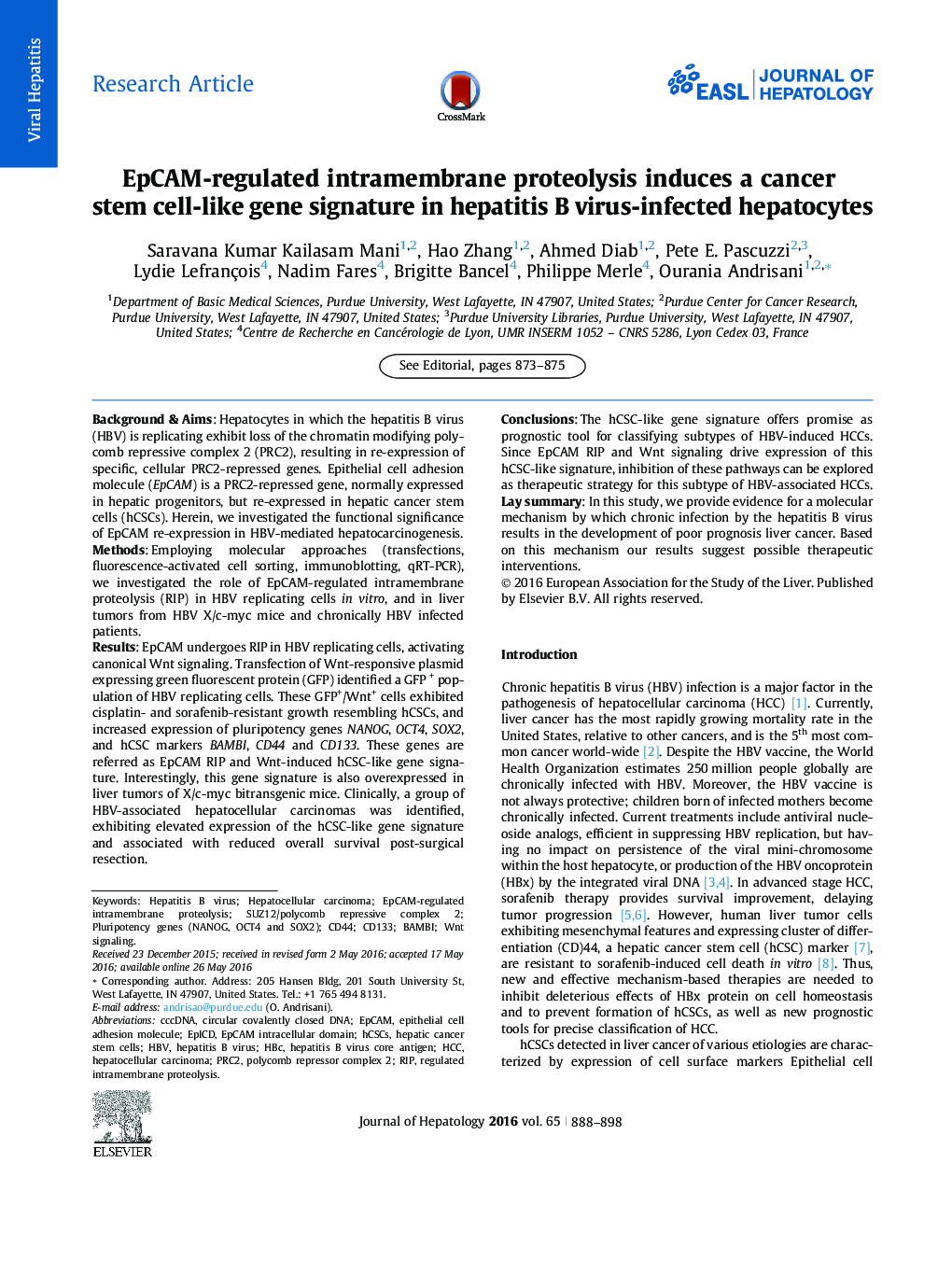| کد مقاله | کد نشریه | سال انتشار | مقاله انگلیسی | نسخه تمام متن |
|---|---|---|---|---|
| 5660657 | 1407495 | 2016 | 11 صفحه PDF | دانلود رایگان |

Background & AimsHepatocytes in which the hepatitis B virus (HBV) is replicating exhibit loss of the chromatin modifying polycomb repressive complex 2 (PRC2), resulting in re-expression of specific, cellular PRC2-repressed genes. Epithelial cell adhesion molecule (EpCAM) is a PRC2-repressed gene, normally expressed in hepatic progenitors, but re-expressed in hepatic cancer stem cells (hCSCs). Herein, we investigated the functional significance of EpCAM re-expression in HBV-mediated hepatocarcinogenesis.MethodsEmploying molecular approaches (transfections, fluorescence-activated cell sorting, immunoblotting, qRT-PCR), we investigated the role of EpCAM-regulated intramembrane proteolysis (RIP) in HBV replicating cells in vitro, and in liver tumors from HBV X/c-myc mice and chronically HBV infected patients.ResultsEpCAM undergoes RIP in HBV replicating cells, activating canonical Wnt signaling. Transfection of Wnt-responsive plasmid expressing green fluorescent protein (GFP) identified a GFP + population of HBV replicating cells. These GFP+/Wnt+ cells exhibited cisplatin- and sorafenib-resistant growth resembling hCSCs, and increased expression of pluripotency genes NANOG, OCT4, SOX2, and hCSC markers BAMBI, CD44 and CD133. These genes are referred as EpCAM RIP and Wnt-induced hCSC-like gene signature. Interestingly, this gene signature is also overexpressed in liver tumors of X/c-myc bitransgenic mice. Clinically, a group of HBV-associated hepatocellular carcinomas was identified, exhibiting elevated expression of the hCSC-like gene signature and associated with reduced overall survival post-surgical resection.ConclusionsThe hCSC-like gene signature offers promise as prognostic tool for classifying subtypes of HBV-induced HCCs. Since EpCAM RIP and Wnt signaling drive expression of this hCSC-like signature, inhibition of these pathways can be explored as therapeutic strategy for this subtype of HBV-associated HCCs.Lay summaryIn this study, we provide evidence for a molecular mechanism by which chronic infection by the hepatitis B virus results in the development of poor prognosis liver cancer. Based on this mechanism our results suggest possible therapeutic interventions.
229
Journal: Journal of Hepatology - Volume 65, Issue 5, November 2016, Pages 888-898